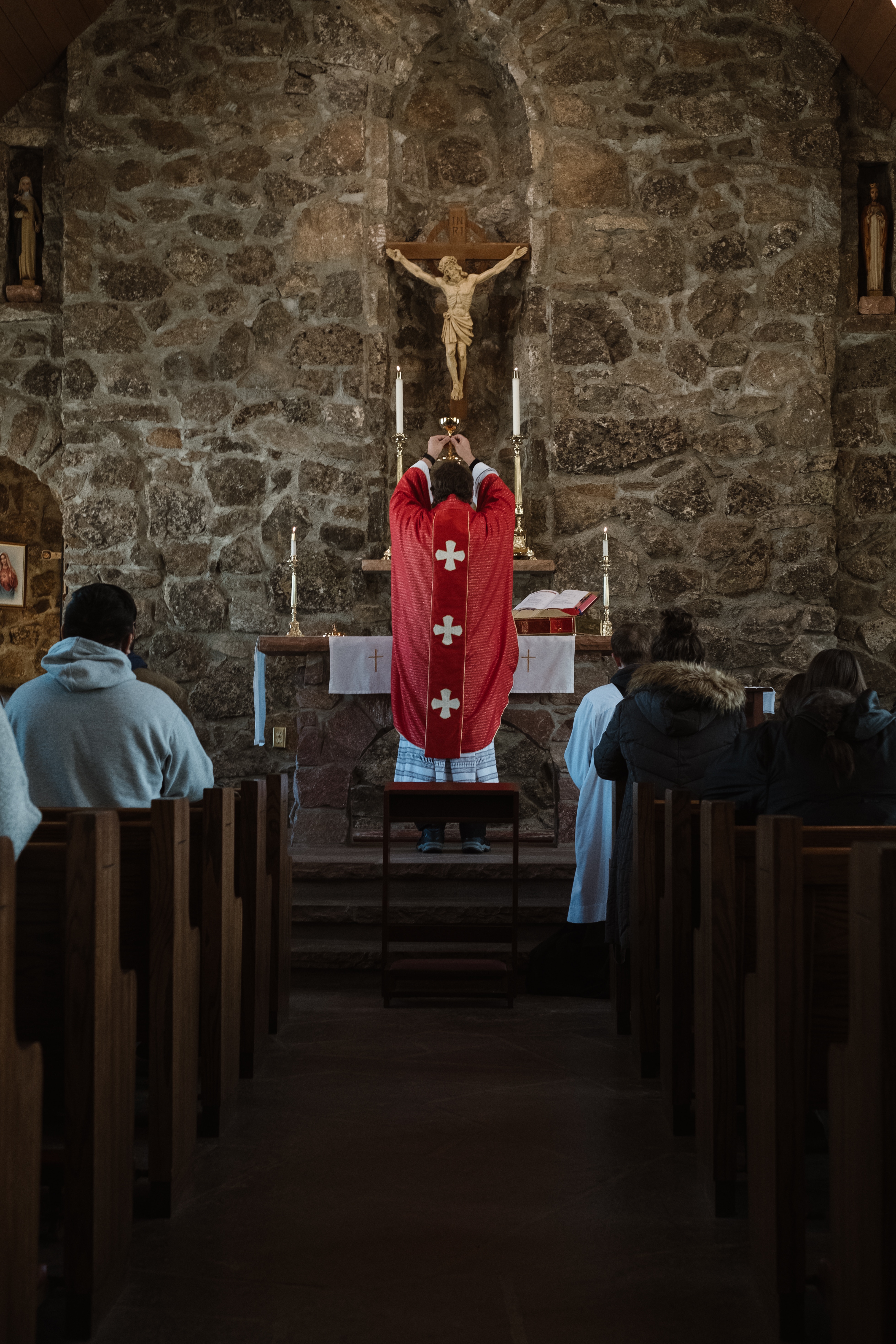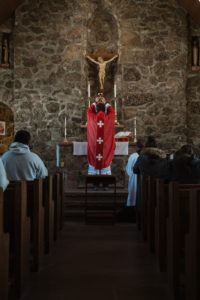Priesthood or deacons?

Perhaps with a side of reproductive rights? What a week for causes dear to us! Suddenly the things we talk about in our impassioned conversations are on the front pages, one in The Atlantic, no less.
So I’ll go there first. Are we working so hard to get ordained into something that ought to be abolished? Perhaps James Carroll thinks so. Fortunately, the whole article is available for download. Carroll relates his transition from regular Mass attendance to “fast and abstinence” because of Pope Francis’s “lying” about the 2018 sex abuse crisis when he was in Ireland. The “ocean of grief” he carries seems to be about loss of the Eucharist as much as the crisis. Everyone knows someone who got there at some point.
Next Carroll reviews church history, broadly and usefully if you don’t know it already, getting to:
The Church’s maleness and misogyny became inseparable from its structure. The conceptual underpinnings of clericalism can be laid out simply: Women were subservient to men. Laypeople were subservient to priests, who were defined as having been made “ontologically” superior by the sacrament of holy orders. Removed by celibacy from competing bonds of family and obligation, priests were slotted into a clerical hierarchy that replicated the medieval feudal order.
This means more to me than it ever would have before because I was part of a long conversation with three men who had been ordained in the same regime as Carroll. They have taken different paths since then, but all affirmed the belief in their own superiority that was bred into them in the seminary. I have been asking others who have been ordained the same question. Like Carroll, they all get to this conditioning as the root of the clerical culture.

While Carroll’s review of Francis’s teaching is positive, noting the Pope’s “innate eloquence” about “the holy,” he circles back to the clerical culture not only of Francis’s opponents but of the structure, “the priests,” and Francis himself because of his slowness in coming to appreciate the sin of priests who abuse. Making the priesthood “toxic,” Carroll argues, is the secrecy that underlies so much from the abuse to active sexuality to church teachings ignored by the faithful and clergy alike. For all the good he’s preached, he sees Francis as immobile on ordaining women and ending celibacy for priests.
Can the church change? Carroll uses the example of teachings about the Jews to say, yes, and quickly. All it requires is revolutionary leadership. Since that’s unlikely, Carroll argues, resistance is necessary, though he’s late if he thinks he’s the first to come to that position: See #CatholicToo and #TimesUp: Catholics Demand Truth. Nonetheless, he proposes to a national, secular audience what many of us are already doing:
Replacing the diseased model of the Church with something healthy may involve, for a time, intentional absence from services or life on the margins—less in the pews than in the rearmost shadows. But it will always involve deliberate performance of the works of mercy: feeding the hungry, caring for the poor, visiting the sick, striving for justice. These can be today’s chosen forms of the faith. It will involve, for many, unauthorized expressions of prayer and worship—egalitarian, authentic, ecumenical; having nothing to do with diocesan borders, parish boundaries, or the sacrament of holy orders. That may be especially true in so-called intentional communities that lift up the leadership of women. These already exist, everywhere. No matter who presides at whatever form the altar takes, such adaptations of Eucharistic observance return to the theological essence of the sacrament. Christ is experienced not through the officiant but through the faith of the whole community. “For where two or three are gathered in my name,” Jesus said, “there am I in the midst of them.”
Intentional Eucharistic communities are the solution for some, like me. Continuing in a parish community and working for change may work for you. Certainly many have just left, which I, and Carroll, would regret, just because the heart of the church is true.
Jason Seidel in NCR reviews various responses, pro and con, to Carroll’s “overtly personal” article. I do wonder why he had to include parenthetically: “(Unsurprisingly the most vocal Catholic defenders of Carroll’s piece seemed to be women, who have the least to lose should the church take Carroll’s propositions seriously.)” Just as we begin to make some progress in Rome on deacons, somebody notices that we don’t have a seat at this particular table.
I’ve done enough on deacons so I will just note two contributions that came to my attention this week. Mary Hunt’s article in Religion Dispatches takes on Francis for the very clericalism that Carroll goes on about. This is my favorite among many stellar paragraphs:
To say to postmodern Catholics that something as benign as the ordination of women to a truncated form of diaconate is impermissible because it is not rooted in revelation is an insult to our intelligence. It’s a way of retarding social, and in this case, ecclesial change simply because Francis can by virtue of one-sided power. If one is unable to see the symbolic and real value of highlighting and reinforcing women who seek to minster in a troubled world with species going extinct and people dying for lack of basic access to clean water and health care, then all is lost for Catholics.
Hunt is not exactly that despairing; she concludes, “Unless these matters are corrected in a hurry, there is a lot of blame to assign for collateral damage to a world sorely in need of every shoulder to the wheel.”
And if this all is too depressing, Phyllis Zagano has provided a final exam in NCR that is just as effective as the way we get our medical information from WebMD. While I suspect that this is not really the final time we will examine deacons, it’s fun, and a really helpful tool to send to your bishop.
Finally, whatever your side of reproductive rights is, I hope you do not despair because of the disregard for women’s lives in the current debates in various state legislatures. Women matter. We always have. We always will.

4 Responses
“The Church’s maleness and misogyny became inseparable from its structure.” This is lamentably true in practice, but not in dogma. The church is “one, holy, catholic, and apostolic,” but not necessarily patriarchal. It is not the sacramental priesthood that should be abolished; it is the patriarchal priesthood that should be abolished. The dogmatic definition on the institutions of the priesthood of the New Law, by the Council of Trent, does NOT mention a masculinity requirement for ordination to the priesthood. Canon law can and must be revised, but no dogma of the Catholic faith has to be changed when the patriarchal scaffolding is removed. All arguments recently invented to buy time boil down to ecclesiastical “fake news.”
http://pelicanweb.org/CCC.TOB.html#CHRONOLOGY
This issue is NOT primarily about women (or men). It is about the mystery of Christ and the Church, and about separating patriarchal gender ideology from revealed truth.
We were encouraged to honor our mothers and sisters; societal culture put superior to women at the time. As for ontological priesthood, again a definition of the time that needs a new understanding. Laying on of hands doesn’t impose the ontology, that is a formation of being. I have met at least two women who ontologically exercise their priesthood, along with many other priests. I believe that such ontological being is absent in some priests. One may have it, develop it, lose it, or never have it as with other formational identities of being and becoming.
What'[s happened to more explanation of the statement in Lumen Gentium that states that all catholics by virtue of their baptism share in Christ'[s priesthood?
How true No dogma of the Catholic faith has to removed, just the female half of God’s Image practiced!
For Blessings Within As well as Without.